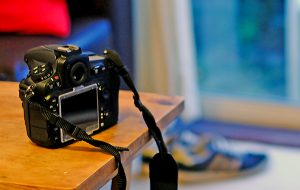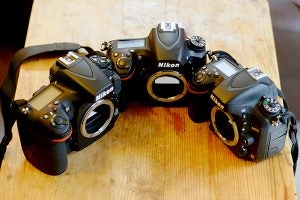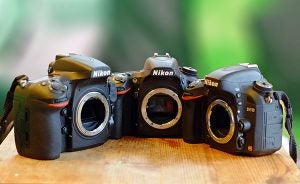Nikon D810 vs D750 vs D610
Mục lục
Which is the best full-frame Nikon?
Anyone remotely serious about their photography needs to consider a full-frame camera, and Nikon makes some of the best. However, at present it offers three great options designed for enthusiast photographers, not just the pros.
The Nikon D810, Nikon D750 and D610 all offer great photo performance in a traditional DSLR-style shell, but which is the top pick?
With a £500 gap between each model, there’s a lot at stake. We’ve had all three full-frame Nikon models side by side to see how important the differences really are.
Nikon D810 vs D750 vs D610 — Price
Before we start, it’s important to consider exactly how much you need to pay to make each upgrade step in this series. As many of you will already have bought into the Nikon lens system, we’ll deal with body-only prices.
Starting off, the Nikon D610 is around £1260. The D750 is roughly £500 more at £1799, although you also need to consider that it’s a slightly newer camera and may drop down slightly over the coming months.
At the top of the tree is the £2400 Nikon D810, sitting below the top-end Nikon D4S, which weighs in at a rather terrifying £4679. Despite the much lower price, you could well consider the Nikon D810 the top option in the range. While a lot slower than the D4S and therefore less suitable for professional sports and wildlife photographers, Nikon claims it takes the best photos of any Nikon camera to date.
Nikon D810 vs D750 vs D610 – Design
From a distance, and even close up, these three cameras look fairly similar. They’re all classic DSLR fodder, from the look to the construction style.
Using magnesium alloy primarily for the main shell, they’re all out to offer strength without a ridiculous amount of weight. On very close inspection, though, you will see a few more areas on the D610 that are made from fiber-reinforced plastic rather than magnesium alloy. There’s more metal on the bottom of the D810, for example, and it does give the higher-end camera a slightly more professional feel.
Much of this ‘pro’ element is imagined, of course, and we’re more than happy with the construction of all three.
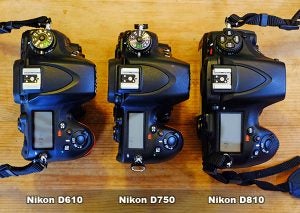
The Nikon D750 is the lightest and smallest of the three, and while its dimensions are very similar to those of the Nikon D610, there are some fairly significant differences. The D750’s actual body is slimmer, allowing for a deeper grip. Nikon has also slimmed down the top LCD read-out on the D750, reducing the amount of data it displays.
While the Nikon D610 and D750 weren’t released all that far apart, the later D750 does seem to be a reaction to Nikon realising it hadn’t really changed quite enough in the D610.
The Nikon D810 is in a slightly different size class. It’s a bit larger, a bit heavier, giving it that slightly more serious feel. It’s therefore a better fit for large telephoto lenses, providing marginally better balance. If that’s not a priority, the Nikon D750 is the practicality winner.
Body-only weights
D750 829g
D610 855g
D810 976g
Nikon D810 vs D750 vs D610 – Handling
We were surprised by the difference in handling here, given how similar and consistent these cameras look. The Nikon D750 is by some way the most comfortable camera to use, in our opinion.
By slimming down the body’s core to the right of the sensor (when looking at the camera from the rear), the D750 is able to offer a supremely ergonomic grip that’s among the best ever seen on a DSLR. By comparison, the D610 grip feels disappointingly shallow, forcing your fingertips into a ‘brick wall’ of rubberised plastic.
By virtue of its larger frame, the Nikon D810 is able to offer a fairly deep, comfortable grip. But in ergonomics the Nikon D750 is still ahead – its in-hand feel is utterly lovely, especially when matched with a mid-size lens such as the 24-85mm one it’s often sold alongside as a kit.
In retrospect, the Nikon D610 is quite disappointing, its shallow grip not remotely as comfortable as the other two’s.
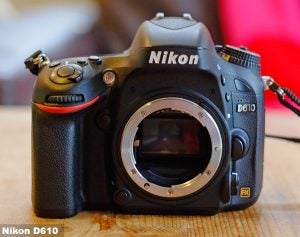
The Nikon D610 and D750 parity returns when we look at controls, though. Both cameras use a pretty traditional P/A/S/M mode dial and dual control wheels to each side of the shutter button.
We find this sort of layout to be a good fit for just about any photographer, from the beginner to the real enthusiast. There’s even an Auto mode for people who just want the image quality of a full-frame sensor but have no real interest in the nitty-gritty of photography.
There are a few little optimisations in the D750, though. The D-pad contours are more pronounced than the D610’s, making it comfier to use, and the Info button has moved. We had no complaints about its position in the D610, but some people must have whinged about it.
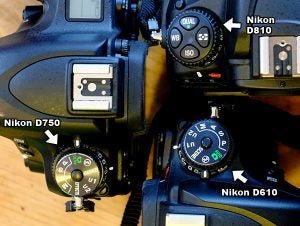
The Nikon D810 is a different experience entirely, one geared towards offering you much finer manual control at the expense of beginner-friendliness.
There’s no familiar mode dial – in its place are buttons to help you control ISO, white balance and focus settings. These things are relatively sidelined in the other cameras, with the view that most people are probably going to want to manually control a couple of parameters during a shoot, not every single one.
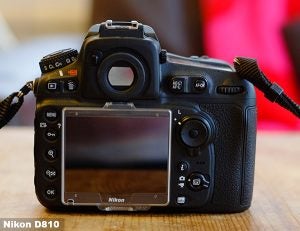
To change modes like aperture and shutter priority on the D810, you press down on the Mode button near the shutter and flick the rear control dial. It demands a much more conscious approach to your photography – lazy snappers need not apply. “All the gear and no idea” types are likely to be exposed by the Nikon D810.
If you’re just getting started, the Nikon D750 is the clear handling and control top dog. But if diving deep into manual photography is what you’re after, it still doesn’t touch the Nikon D810.
Nikon D810 vs D750 vs D610 – Performance and AF
These aren’t Nikon’s speed shooters. The 11fps Nikon D4S still reigns supreme on that front. However, with the Nikon D750 in particular, we’re starting to see really impressive speeds even from cameras not specifically designed for super-fast shooting.
The Nikon D750 is the quickest of the lot, while the Nikon D810 is hampered by the sheer amount of data produced by its 36.3-megapixel sensor. Here’s how the burst shooting of the cameras pans out:
Nikon D750: 6.5fps (15 RAW at this speed)
Nikon D610: 6fps (16 RAW at this speed)
Nikon D810: 5fps (23 RAW at this speed, 7fps with DX crop)
All three cameras are impressively fast, with enough speed to cover action shooting, as long as it’s not at a professional level.
Still, in reality the Nikon D610 lags behind the other two for another reason: autofocus.
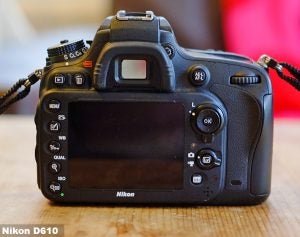
Where the Nikon D810 and D750 use the Multi-Cam 3500-FX II focus module, the D610 has the older Multi-CAM 4800FX AF type. Names like those are sure to get people switching off instantly, but we did find the D810 and D750 offer faster AF, particularly in lower light, as well as better focus tracking.
It’s the speed and reliability that matter most, but you also get more focus points. The D810 and D750 have 51 while the D610 has 39.
In all cases, these focus points are grouped towards the centre of the frame, but how cramped they are is roughly consistent with the move down the price scale. The D810’s are the most spread out, followed by the D750, then the D610 – whose points are all crammed in annoyingly close to the centre of the frame.
In all cases, some compositional creativity is needed to take more interesting shots. This is an area where we’d like to see full-frame cameras improve, especially when CSC cameras such as the Samsung NX1 offer hundreds of phase-detection focus points that cover much of the frame.
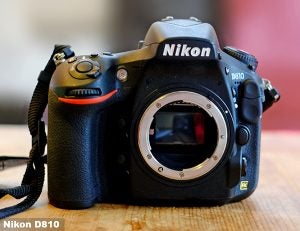
Nikon D810 vs D750 vs D610 – Viewfinder and Screen
As these are all DSLRs, they all have optical viewfinders as well as rear screens. All three also have monochrome secondary displays on the top plate to let you see the current settings, battery life and so on.
We’ll deal with each of these bits separately. First, the viewfinder…
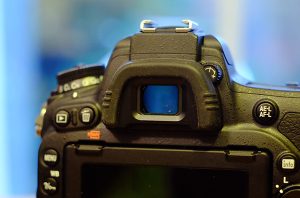
The hardware is very similar. You get a 0.7x magnification factor in all three cameras and 100% field-of-view coverage. The read-out info is the same in each case, too, with an AF point indicator on the viewfinder itself and a simple, clear array of settings below.
While the hardware’s very similar, the experience is a little different. The D610 and D750 have chunky rubber eye shields that are good for blocking out the outside world, while the D810 has a flatter surround that may be welcomed by glasses-wearers. The D810’s is the only viewfinder designed to accept the Nikon DK-17M viewfinder magnifier that makes the display appear much, much larger.

Unlike most camera accessories, the DK-17M is pretty cheap at just £24. The perceived size of the viewfinders as standard is more or less the same, but being able to blow it up for so little money, while only adding the sort of bulk seen in the eye guards of the other cameras, makes the D810 the obvious choice for real enthusiasts.
Plus it’s the only one to have a circular viewfinder for extra camera-nerd cred.
Next up, the rear displays. And it’s an area where you can easily get lost in the specs.
All three cameras have 3.2-inch screens and, contrary to the numbers, they’re all roughly as sharp as each other. The D610 has a 921k-dot display, while the D750 and D810 have 1229k-dot screens. They sound a lot higher-res, but those extra dots are actually white sub-pixels added to each pixel to allow for greater brightness without consuming too much battery life.
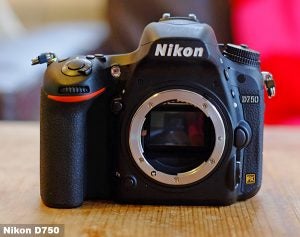
We also found that the RGBW screens of the D810 and D750 are better at maintaining colour accuracy when the backlight’s boosted to cope with sunny days.
However, the only real disappointment comes, surprisingly enough, from the Nikon D810. It’s the one that suffers from noticeable lag as the display catches up with what the lens is actually seeing. It’s not terrible, but it is a shame.
The Nikon D750 is the only one to offer tilt, with a screen that, while not fully articulated, tilts by up to 90 degrees up or down. It’s a great extra for more dynamic shooting, which is far from ruled out with the D750 as long as you shoot with a lightweight lens.
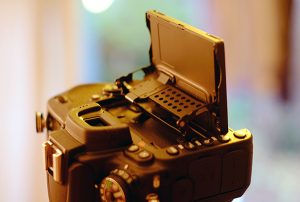
Once again, the Nikon D750 has the edge in a few little areas, but its top-plate display is the weakest. With a 2-line LCD to the 3-line ones used in the other two cameras, it misses out on displaying a few extra shooting parameters seen in the D810 and D610.
Some of you may be more than happy with what the D750 offers, but it’s another reason for the pros and semi-pros to lean towards the D810.
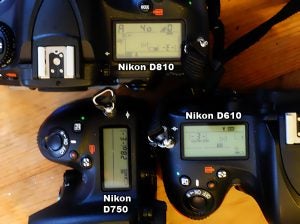
Nikon D810 vs D750 vs D610 – Sensor and Lab Results
One of the main benefits of the Nikon D810 over its lower-cost brothers is that it has a much higher-resolution sensor, with 36.3 megapixels to the 24.3 megapixels of the D610 and D750.
In our labs tests, the Nikon D810 far outstripped the other two for pure detail, with 4000l/ph at base ISO to the 3200l/ph achieved by the D710. Even at higher ISOs of 6400 and 12800 the D810 manages to outperform the other cameras. Suddenly paying all that extra cash makes sense.
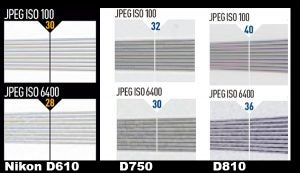
However, this is only going to be critical for those looking to crop into or significantly enlarge their shots, and dynamic range performance is a lot closer. We do see the D810 hold onto DR a little better at higher ISOs than the other two, but there’s not a huge world of difference:
D810
12.86 ISO 100
10.79 ISO 1600
8.33 ISO 6400
D750
12.86 ISO 100
10.08 ISO 1600
8.05 ISO 6400
This is supported by the results from DXOMark, too, which rates the D810, D750 and D610 dynamic range at 14.8 14.5 and 14.4EV respectively.
There is a slight difference between the sensors of the D750 and D610, despite the two offering the same resolution. Some of the improvement is down to improved processing, though, with an EXPEED 4 unit in place of the EXPEED 3 of the D610. It seems to aid in maintaining detail in JPEGs across the ISO range, even at fairly low ISOs.
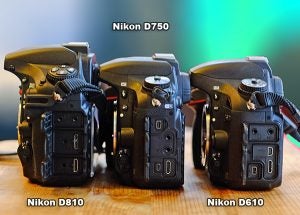
The Nikon D610 also has a very, very conservative ISO range for a full-frame camera. With a native ISO range of just 100-6400, sensitivity doesn’t go very high until you reach the expanded zone. Even with expanded ISO, the range only goes up to 25,600.
Nikon’s D750’s native ISO tops out at 12,800, with expanded options for up to 51,200. The D810 offers the same higher-ISO max settings, but offers a bit more flexibility for low-sensitivity shooting, with an ISO 64 setting.
Still, it’s the high ISO handling improvements we appreciate the most, especially as these cameras can produce very solid results far higher up the ISO range than 6400.
Verdict
While the Nikon D810, D750 and D610 are all great cameras, having them side by side makes us want to tell you to rule out the D610 if you can afford to do so. Shooting with the Nikon D750 is a much better experience in too many ways. The handling alone makes the D610 seem, with hindsight, a little bit of a misfire.
We think the Nikon D750 is good enough to lure many away from the D810, too. It’s easier to use and offers better performance and handling with similar dynamic range performance. If you don’t need the extra resolution or the pro-style control layout, the Nikon D750 is the strongest of the three, and was a deserved winner of Best Camera in the TrustedReviews Awards 2014.
Next, read our Best Cameras Round-up

